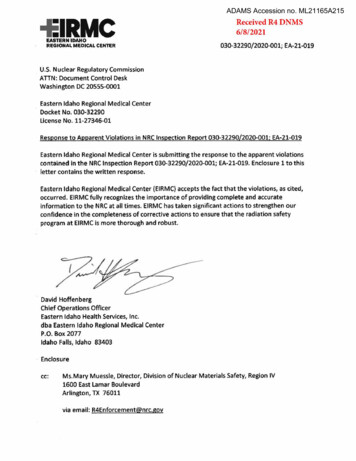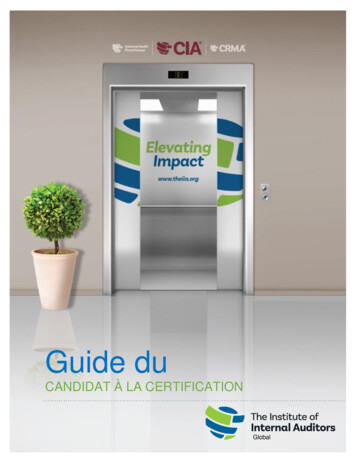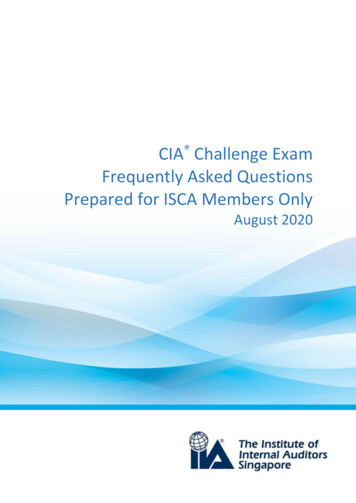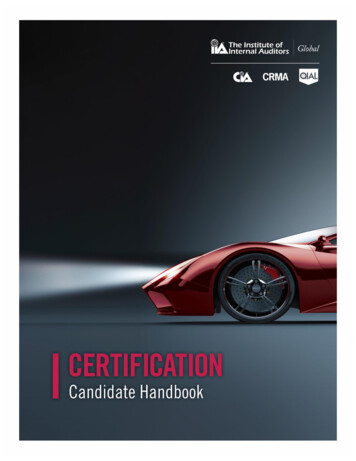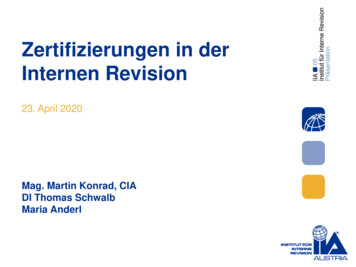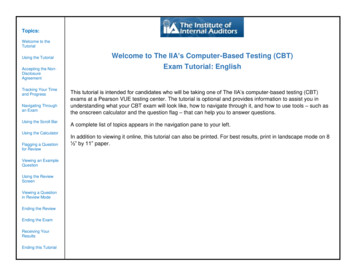
Transcription
LafofAsse bies 4care ayNeHperbeedey AfSBee cae,tt4iefaleesot Fypape a eabeshariaa Menatad peeVbBerkaaabeadty tyohBikeHeeeetnaHt Wed 8aPeMysstoeeerated nih:Path‘#ieeetaeSeineii": HA 4105520 7.034. @an itTtsiresteryeetFi bay ee CeenaaoeAtenee*1pee eteeee.satae‘JayPee anymaisaesi Nae Ustatseeieioe,ei!"4bP es nesesaflonaenthehaieaetitancathSia eatenHis Leib piesyrsslots shatiia mean aulhate ash4Batra ita4ene) 4 PaahPEAaaera} eeraheAaae RAL it FYaleeLid b.ah 9oeafOU8daeIfa doteeakqtreybe " ifeter te siiiy: Bal oeTeedital an 7 seitJ4pitade.AAS iJA Femsny ater Affs Peo 4iea tye OraePiribeaeRLMeee Lt aealee LI9 take Hard VEN Sa 94)PbSohAa SEeioh oadii) sasNy24 Se Chbp RibasPereee ete Ba ARS APeePautagheyaw9 via bedea oeDeuast ”&,rahFaepart! 85 Gi tgsLaan:oeE Cinhece hay o8Ca a aewbiea] HeVF‘.Ayat itseagateoe nersae waMie y,NeaoaoeiePn SyedoiBussLLRotai!p)Binorfeeaetrnwhe:idhia ek cenehDates AyanGerReeseateniftes at8 aENEneieieaeaderteintyaedHeM49Tdiedeenant HEN“Iohdas.eateaetet“Nisttes osraatHie ae 4ae 5aiwGan)oeaeBateiees it’Perle erMRCHacata tyLet baAss Sdot Fi yaa, ie iae168)byaa aieBehite&aHeitbeetiatibaaiseeeneaaBanteiene te“4a LAP Bri’aialaetice! ytd naestAtAv toa,iAanaeards todasoiParinaeaaSteeaeWeta bathther asa tttyy4XeBatennjeyew o‘iehatha adrPe3featpeneaiatiesRes;this)eee BetLupaoeitateciaine otthe aa) “haHii SiashauraaeasaHitt:HeLeVile menei oeeetrpatsattCh iisini aa4 aedmaacineasRieilsheespe#UypeeardsFsWeta ibaaeasqcdeal i}Are Be"aaRUPEesSRE Keak14ee AiditTatFMwhitt caus4)a, ha i Witata! inae‘itynaeYitaats‘iahieNethsee :teatd thsibe neA aeBathe i -Raettae iaeihy-arn Wiskescucurothianoea chbitMria utBSafRenh{# you WW ae a *an hd)eHOH itMedia ie tf}Re at mea 4 oe ifApts‘tical HuTERSen itmfi anysdeh ged “satECHRzitieCNAEeaeooPeee aeeoe aoeFeelytet eeanitsahmitinsceaeceataWitte:rinkAhh Ait ehShei pen wakogn agiphPenn Bi)AakiatieReetNt mith ;inpase1 Asednd aeiiaab ew te eeAs ya.ee'aetWats ii riskae& Hastysaiooce ayheii saaiehsena tiaraionerib ioeih ei iea:Aavibe“et}“athens eines4heAneAaaaoe Meme(fteatsbaits Bs tenie4*ae uia iRe4 Reh tafepericntantHeniitansata!bitiLey(paea ae2 oaGEAtelewtas334 iheHhOrbe we hysabh;ngepedine7aed tena teoe4itPee web)ats Hen Riaea)caresaePh.YsiCrassieetnaoIeat BranBaviteati ntniaaaeWaa ta b4tiene)ea4 againsras naBeye beWirt ottras,wateSeatsLaeetee)ateHEPDeanFieBE eerst Pee reneerites"i“hte aVeeeeeWEN45Bathe phiaHSet cy in“ekan hyteeaD 48 *4 *ar at: RaeeeoeosaethayaioteetWh ih oiet eriere NS‘barney 4 eke bemente, eiPerit seinsiyoatSTeasstatatatieBa ah Heircfme ue ueMeinsareoewe.viea baiea tahnemieipiasagitnace aaReteisaside sate) rea,azi nmtahfitSONI H autdae DATeeeA hecep959-4etsCa)PEtMatch?ier jetyhet erhuasbt PogpiaisisNshihRRthasfvi!masaaoeSenatees augerebieinkfaeaFish:a13a teBe meat On vay ton24!ae afsats Ree cathe bel ph ap bry:ea tyHeemiaian‘ye)ne aD tagth PeithFdioCOPA: Flentaci senders tot ieVApae aactien ateernni—: e neteeee aniaceaientonat’ ote ieity WeaesJy BePa“ihi WhPanis:i ae oa4 ee iranEd Wh eeaEi ue bALak fan ;eae ae ariatraredacer taleocdieachaorrte te fetr tehtObaheandebsaeyehetsjibe OAre cemt) een
IUBL ICRmy.wel!callA aahicull4UNITED STATES DEPARTMENT OF AGRICULTUREBUREAURae)eon IN G)2.2MIXINGOF PUBLICROADSVTOPSOILWITHBITUMINOUSMATERIALU.S, GOVERNMENTPRINTINGIN SOUTHOFFICE:1927CAROLINAEXPERIMENTSi Ninesval
PUBLICROADSA JOURNAL OF HIGHWAY RESEARCHU. S. DEPARTMENT OF AGRICULTUREBUREAUCERTIFICATE:By directionof the SecretaryOF PUBLICROADSof Agriculture, the matter contained herein is published as administrativefor the proper transaction of the public businessinformationand is requiredThe reports of research published in this magazine are necessarily qualified by the conditions of the tests from which the data areobtained. Whenever it is deemed possible to do so, generalizations are drawn from the results of the tests; and, unless this is done,the conclusions formulated must be considered as specifically pertinent only to the described conditionsVOERSaNOw9NOVEMBER,TABLEOF1927R. E. ROYALL,EditorCONTENTSPageSurface Treatment of Topsoil Roads.;The Action of Sulphate Water on Concrete:Regional Highway Planning Survey for eldonDISTRICT No. 1, Oregon, Washington, and Montana.Box 3900, Portland, Oreg.DISTRICT No. 2, California, Arizona, and Nevada.canesau sre.eats)No.;:Wisconsin eatinao.4, Minnesota,tape eos AleNorthDakota,South410 Hain Building Stepan Mince.siabveeicett:PUBLICWashington,.214ROADSD. C.SanFrancisco,Calif.OFFICESDISTRICT No. 8, Louisiana, Alabama, Georgia, Florida, Mississippi,South Carolina, and Tennessee.Box J, Montgomery, Ala.DISTRICT No. 9, Connecticut, Maine, Massachusetts, New Hampshire,DISTRICT No. 3, Colorado, New Mexico, and Wyoming.301 Customhouse Building, Denver, istery;,Gasoline Taxes for First Six Months of 1927THE’Dakota,Newilerseya News orla Rhode lslendmencayermenttFederal Bakine The N.Yand5, lowa, Kansas,Nebraska.Missouri, and8th Floor, Saunders-Kennedy Building, Omaha, Nebr.STRIDISTRICTNo a nOFADS ; Delaware : Maryland ,Pennsylvania, Virginia, and West Virginia.NorthCarolina,Ohio,i1[DGWillard Buildines WashitoN eaeDISTRIGINouGs Arkansas Oklacomeeancuntens1912 F. & M. Bank Building, Fort Worth, Tex.DISTRICT No. II, Alaska,Goldstein Building, Juneau, Alaska.DISTRICT No. 7, Illinois, Indiana, Kentucky, and Michigan.South Chicago Post Office Building, Chicago, III.DISTRICT No. 12, Idaho and Utah.Fred J. Kiesel Building, Ogden, Utah.———eSOwing to the necessarily limited edition of this publication it will be impossible to distribute it free to any persons orinstitutions other than State and county officials actually engaged in planning or constructing public highways, instructorsin highway engineering, periodicals upon an exchange basis, and Members of both Houses of Congress. At the presenttime names can be added to the free list only as vacancies occur.Others desiring to obtain “Public Roads” can do soby sending 10 cents for a single number or 1 per year to the Superintendent of Documents, U. S. Government PrintingOffice, Washington, D. C.
SURFACETREATMENTOF TOPSOILROADSREPORT ON COOPERATIVE EXPERIMENTS BY THE UNITED STATES BUREAU OF PUBLIC ROADS AND THESTATE HIGHWAY DEPARTMENT OF SOUTH CAROLINAReported by J. T. PAULS, Associate Highway Engineer;COOPERATIVEOCAL considerations of traffic and of economicL necessity make it certain that relatively low-costroad types, constructed of local materials, willlong continue to constitute a large proportion of ourhighway system.EXPERIMENTSUNDERTAKENThe State work yielded such promising results thatIn some sections sand-clay and sand-clay-gravel surfaces predominate.Where conditionsare favorable to these types they are entirely satisfactory, but there is a considerable mileage which is keptin a satisfactory condition only by constant and painstaking maintenance at considerable cost. Such roadsurfaces are extremely dusty when dry and frequentlyrepair and reconstruction costs amount to large totals.Topsoil roads have been built extensively in theSouth, where, in many sections, suitable surfacingmaterial occurs as the thin upper layer of the soil, particularly on hills and knolls. The material containsa preponderance of small gravel particles from which aconsiderable portion of the original clay content hasbeen removed by natural processes assisted by cultivation.Naturally, all native deposits are not equally suitable for road building.The characteristics and amountof the clay as well as the gradation of the coarserparticles influence the behavior of the material as aroad surface. Highly plastic clay is not desirable inas large a quantity as where it is of a low degree ofplasticity. An excessive amount of clay, while bondingwell in dry seasons, is likely to cause muddiness andrutting during continued wet weather.A deficiency ofclay, if not too marked, may prove satisfactory at thefurther experiments of this general nature were undertaken during 1925 by the South Carolina State highwaydepartment in cooperation with the United StatesBureau of Public Roads.A 7-mile section of Route 15 in Anderson County,beginning west of the city of Anderson, at the end of thebituminous pavement and extending west approximately 7 miles, was selected for a service test of sixexperimentalsections.Detailsof thesesectionsareshown in Table 1. Five other experimental sectionswere located in Spartanburg County on Route 19,beginning at the south city limits of Inman and extending north on the Spartanburg-Tryon highway to theStateline.These five sections aggregated approximately 8 miles in length and were designed as shown inTable 2.time of rains, but is apt to result in raveling whenmoisture is lacking. Methods for the determinationof the quality of clays are not yet fully developed, butA DovuBLE SURFACE TREATMENT AFTER Two YBARS SERVICEtests are available by means of which their propertiesmay be estimated and compared.tae feoSeveral methods of construction were adopted andConsiderable research is being conducted to develop a number of very different bituminous materials specimethods of eliminating dust and materially reduce fied in order that the maximum amount of information-maintenance costs on sand-clay or topsoil road surfaces. might be derived with respect to their behavior whenExperiments generally involve the use of bituminous applied to road surfaces varying in composition andmaterials for the purpose of reinforcing the existing texture.In selecting mineral cover material, it wassurface either by impregnation or by the addition of a decided to use natural topsoil in comparison with localthin surface layer of greater resistance to the destruc- river sand on some of the sections.tive agencies of nature and ENTEXPERIMENTSIn 1924 the State highway department of SouthCarolina applied a surface treatment to a 7-mile sectionof the topsoil road between Spartanburg and Inman.1OF TOPSOILSTUDIEDBefore the construction of these experiments wasstarted, a survey was made of the condition of thetopsoil surface of the roads selected. Samples of thematerial were taken from the surface and subgrade atA priming coat of light refined tar was first applied at intervals. The results of laboratory tests on thesethe rate of one-fourth gallon per square yard followed samples are given in Table 3.A wide variation in the condition of the differentby one-third gallon per square yard of either tar orThe surface wasasphalt applied hot. Crushed stone, one-fourth to 114 sections was noted in the survey.inches in size, was spread over the surface at a rate of smooth and well bonded on a major portion of each,about 50 pounds per square yard and the operation was but in some places it was loose and in others roughand potholed.completed by rolling.On experimental section 6, from station 280 00 to1 See Surface Treatment of Roads—Hot Application Method, by N. 8. Anderson,320 00, scaling and crumbling was prevalent. Themaintenance engineer, South Carolina Highway Department, Proceedings of the FifthAnnual Asphalt Paving Conference.material in this location contained a large amount of70060—27——1191
192PUBLICTasiyROADSVol. 8, No. 91.—Details of construction and re-treatments of experimental sections on Route 15, all sections 20 feet in widthORIGINALTREATMENTSIN MAYANDJUNE,1925Bituminous materialSection and station Type and depth Gallons Character «Aaoeies2eeSees(6.oe2 ee Tar, 8 tOdMedium Quick-dryin 10 sasera sdspeciiig viscosity.atia40 Camere: ssnces eeeeeees eeeeTar, 8 to-13 specific viscosity at 40 C --------23 eee eeSlow-dr yinPrimer:Double surface-treated -. -oll tees sreeeeeeCeeh1.5 None,1.5 None.a38 ete ieee2 he anne Tar, 18 to 25 specific viscosity at 40 C -.---.--------ea. G0.2270-84 0 361-00 22-22 e aaeenyeee eeeSeteSec, 4. 108- 24 to 16104. dbsSec, 6, 161-704 to.270 -842 2 inches. aeGasSec, 3, 34- 32 to 1084-24 - - - --Coveringyard8 ATSSec. 1. 0 -00'to 15--84. 2bosce se saaS@G.2. 15-84 10 844932225. Saunt1See«25 Second coat: Hot asphalt, 150 to 200 pen - ------------Os aaeee erste Ae. 38 Higerranmibee roam caTar, 8 to 13 specific viscosity at 40 C .- -----aSo33,:ee e2topsoil, stone, 4 to 1 inch,Station 369--00 to'36l-- 00, mowprimer 2225-22---- on see eeeRE- TREATMENTS:Bituminous materialSection and stationDateType and depthGallons persquareCharacterCoveringyardSec. 1.eles to Lotah ae22 oeORE Ties s Cetsiaae EARSJuly, 1925 3 -eeseeae Surface-treated . .- March, O02 eeeSE SC do eae ae eee oeMixed, 3)4 inchesSurface-treated ----- November, 1925. Mixed, 2 inches-.-March, 10g7 eeeMixed, 31% inchesFRED GO cua ceeSOUT a corthealedssoaeecena woeSec. 3. 34-32 to 81- 50 - .--- - . - Val yanLO2n eeeeels 3 See Bo. ceaee ee eeeNovember, 1925. SI-FbO GO Q87R24 ses s4oee onc eee eee do.eeASe GO)AisiOU me Seesedo, Meake BigsAi--00 tOl80--00SeeeNataG10 E0 108-OA. coal:\Mareh, 19See sas ee seen 8yee aS UnULSScarified .2. aSurface-treated .Surface-treated . . . -Scarified and surface-treated eeSec. A134- 00 to 161-404 .-.-.-. - . July, O25 shee22 ee Hearified fa7 . sak he.pet lac SUoh ee ae anaRL eeeT ren LOrLS4e 00s es Sts ene November, 1925 -OeOO 44 2saTar: toils specific viscosity at 409 Caees-Surface-treatedsesees -seeee a eee CoKoYear Perit teas beSn wedieeeeaOseeaaofSSceeEeesepeeeeeleefae ALEena eee aeSeeeaeeoeTar, e TOO SPOCihC wiscosity at 40s @ ieeeSSOaoe oe BeeesDeea ee YeSeso neee aeheeeneysCO 2TORRi eee ce teSReek ed ee eneSec. 6. 279- -84 to 353- -00 .-. --. -November, 1925 - . - COS neeeeeee Slow pepldnge OLMarch; 192%,3. 25a Be dos 25270 ees 5 TR eGaesNovember, 1925 ---.- LONSe soe5mica, re et notene to A cr the bond oealso, by collecting in layers and pockets, to cause scalingof the surface. The South Carolina highway department has found that those portions of the surfacecontaining high percentages of mica are slippery, unstable, and difficult to maintain during the wet season.The portions of the surface showing the greatest micacontent were located in the deeper cuts and on fillsbuilt with the soil from these cuts. In these locationsthe mica-bearing subsoil had been incorporated withthe topsoil by the mixing during construction and maintenance.The topsoil surface material on the experimentalsections in Spartanburg County contained in generalmuch less mica than the surface on portions of theAnderson County road. However, in the formercounty the surface of experimental section 11 betweenstations 729 00 and 791 25 scaled and crumbledbadly during the progress of the treatment.Thismay have been the result of spreading a coat of finelycrushed granite during the spring which at the time wasinsufficiently mixed with ‘the clay binder underneath.Table 3 shows that the clay content in the topsoilmaterial ranged from a minimum of 8 per cent to amaximum of 32 per cent, the average being about 20per cent. The surface from which the sample containing 8 per cent clay was taken was loose and badlybroken.Jn the area represented by the sample havingeee 0 (0g Stne airre Ssoe te SeSeaPyeeee Sen eeeRRSShegeeeed eegoDo.Do.2380Do. 24Do.aeoeDo.Do.2Do.eeeeee159 --00't0 1615-04-5022. March 192722225 Scarified and surface-treated Tar, ito. 18'specifice: viscosityiat: 402 (Ge 222.2 222 eee ede1084-24 to\1695-005--. 2.2.)eees(6 (oanSurface-treated 3222 Peal soeae oeaee eeaeee ee eeeSec. 5.eenee4025eeBk a ee-40 20Do.Do.32 per cent clay, the surface remained smooth andwell bonded during dry weather but rutted somewhatduring wet weather.It appears, by comparing theclay content with the condition of the surface, thatless than 20 per cent clay in this topsoil did not ingeneral give a stable and well-bonded surface duringall seasons of the year. Clay was considered asincluding all particles of less than about 0.02 millimeterdiameter and on the average constituted approximatelytwice as much material as would have been the casehad the limit been taken as 0.005 millimeter diameter.A diameter of 0.005 millimeter is usually consideredthe upper limit under present soil terminology.Thelow dye-adsorption numbers obtained may be takento indicate a clay low in stickiness and plasticity.This probably explains why such a large percentage ofclay was needed to get a well-bonded surface.The low moisture equivalent obtained indicates ingeneral that the material dries out very quickly aftera rain. This characteristic property of the topsoilsurface was noted during construction.Other physical tests add but little to this information, probably due to some extent to the fact that theproportion of sand is so large as to render inapplicabletests designed primarily for soils. In general, however,it is seen that for samples from poorly bonded locationsthe dye adsorption is 5 or less, the;moisture equivalentis less than 8, and the Jower liquid.‘limit is less than 19.X
LOCAL193PUBLICN ovember, NOUSwas sprayed, the primary function of which was to bindthe relatively heavy layer of coarse aggregate.In selecting bituminous materials for the variousTable 4 gives the results of tests made on the mineralsections, certain qualities were specified which were cover materials and Tables 5 and 6 give the characterthought to be desirable with the methods of construc- istics of the bituminous materials used on the severaltion and maintenance adopted. For sections 1 and 2, sections.materials were desired which would mix readily withthe topsoil, permit working and smoothing with roadmachinery soon after being applied but which wouldharden with sufficient rapidity to produce a stablesurface under traffic.A thin mat surface, susceptible to further strengthening by subsequent treatments, was desired on sections3 and 4. For this purpose tars were specified of suchnature and consistency that they would penetrate thetopsoil, thus minimizing the danger of displacementunder traffic. ‘Tars of two consistencies were used todetermine their relative efficiencies.The object on section 5 was the development of asurface somewhat similar to those of sections 3 and 4-except that a rather light grade of slow-curing oil wasemployed.With such a material it was anticipatedthat a rather plastic mat would result which could beshaped by dragging and thickened by later treatments.On the double surface treatments, experiments 6 to11, inclusive, the purpose was to form a stable mat ofstone and bituminous material, firmly bonded with thetopsoil surface.A rather fluid product, designed topenetrate the road and to dry with sufficient rapidityto permit early application of the second coat, wasused asa primer. Over this a hot refined tar or asphaltTasue2.—DetailsSCARIFYING ToOPsoIL ally the same methods were employed in theconstruction of experimental sections 1 and 2. Thetopsoil road surface in each case was scarified to a depthof 2 to 3 inches, after which this loosened material waspulverized by disk harrowing.About one-half of theloose material was then bladed to the sides of the roadof construction and re-treatments of experimental sections on Route 19; fromwas 25 feet wide and on the remainder 19 feet wideORIGINALFOR THEMETHODSTREATMENTS,JUNE,station0 00to 38 -00 the surface1925Bituminous materialSection and stationGallons Type;perCharacter square yard Covering S00. }.A. 1(esee Double surface-treated . . - (eased eine ie eesree BeSestny BAD Caageetes82 -50 to 436- -001 . . . .-- ich.EP hs oar ee eeeSee eeeSELoGS ofeKes elope As tO Ree Soaer weesSec. 8. 436 -00 to 512 -00 - - ---.----- Double surface-treated - -- -- GPaErebeayeyeeReo coat:Hot asphalt, 150 to 200 pen.;Sec. 9. 512 00 to 536- 00.--.---- PERM CRU.ON EES Sieae Hee \fPrimer:Sec. 10. 536 00 to 622 50 -.--.-.-.-- Se do. --------------------- Ee See. 11. 622 -50 to 791 25 --.------ [ea2s5CO sons:aete eres eesMEMSye i1, LTSTar, 8 to 13, specific viscosity at 40 C 14CONUPELOU armamentn oe eeDo.Eek {512 to 517, 14 to 1 inchistoneSif to533,44 neh chats, 533 to 536,14tona f536 to 553, 14 to 1 inch slag.io 553 to 622 1-50, Y{ to 1 inch stone.Primer: Tar, 8 to 13, specific viscosity at 40 C eee oercoat: Hot asphalt, 150 to 200 pen-.- .350k lS i 4 to 1 inch stone.%A \}34 to 1 inch stone.1 This section was double surface-treated by the State highway department in 1925.RE-TREATMENTSBituminous materialSection and stationDate Type CharacteraSec. 7. 38 -00 to 82 -50 . . . 03-00: t0 8-F00.2 sooo oeeSaRoars at OctOre-U(Ns ae eee Sen amee Sy—eeeeeeT)penha eee BeenMarch, 1926 -purfaco-treated s2- ------.-—Sec. 11. 622- 50 to 791 25 .- . --November, 1925- - GOL eon eo teakMASec. 9. 512- -00 to 536 -00 .-- . . -- Co easesRee oete ear, taeieSec. 10. 574 -50 to 622 -50- -.--.-.- November, 1925 - GO pene: arte! See CeBSG tOin/4--D0 26s. - eee. eeMarch, 1926. -- wee Leyes CRMele Bevery eyAeoneat ae naeo sceneoutapersquare yard a November, 1925.) Surface-treated . .- Tar, 18 to 25, specific viscosity at 40 C March; LO26 e22 ap.oai ee ee Sah Tar, 8 to 13, ‘specific viscosity at 40 C -Sec. 8. 436- -00 to 512 -00-- .-.-- eeS% Sand.XKDo.ween eeawnhelectt enceMedium quick-drying oil .---- . -. .-%Do.Tar, 8 to 13, specific viscosity at 40 C - Tar, 13 to 18, specific viscosity at 40 C - Tar, 8 to 13, specific viscosity at 40 C -! Do.ye Do.\% Sente 553 to 574 -50; 536 toSlOWedivino Olletese% Sand, 622 -50 to 720, 735 to at FRRCoveringGallons553, stone.ta eonCe eae 750,780to791 25;re-mainder 14-34 inch stone.1 This section was double surface-treated by the State highway department in 1925,
194PUBLIC ROADSPULVERIZINGTHETorsoitArrpRSCARIFYINGVol. 8, No. 9FINALAPPLICATIONOFBiITuMINOUSATORYFirst APPLICATION OFTION OF THE SoILt.AFTERSPREADINGBitTuMINOUS MATERIAL TO A PoRSECOND APPLICATION TO INGCOMPACTINGWINDROWSTABLE 3.—Analysis and tests of samples of topsoil surfacing from experimental sections,SI: : S ape Ma TaalSoretfeae Seoqi32 eA , 3}. 4 te} LS1o 48/88:6ahteWeeWebereer Weer, cent cent cent115292 337Pere cent381DaAtetees67O333338 74 3143AN71532 153315343)Age4106 125) 145 14846577bt 1535153655170 213 8 7652692 8153015381 153715381568 1589;1540 1562 156315455 244 6 289 107eelSiale9 as37,Ol5s53ig.ab.az)5 OR a e760;13SEEcaiSee“16heessaka Inches1.86 Smoothand well bonded.7591736160TeyVO)6 Badly broken, poorly bonded.615913926326111012192731014171.91.87 Smooth and well bonded.8Do.7557a819181900(helBUSS celeR)Loess)ee aBe)9 Good; some loose material on the surface.7 Considerable loose material, poorly bonded.6 Good, except poorly bonded at the edges.556uf1719Oe014 ieee9)16 1.88 Very loose, poorly bonded.6 Do.6921016 1.85 1216L018930118(top PPAR 0 ALCOD nerOnin:19415, { 1.8Do.34;8331010128568122163fale8253 5 832111170102158195284 147 9 826Saeee98TOM1066aTae13SB;211776CieAe cal ates Sa Pea ee aShines es ee ne Ee TEP he aAiDo.6 Loose and poorly bonded.97110201638617L7H00Le151.85 Rough, well bonded.10 64927713316ZLAGLONE lnLeeLee’853a534124]44 2993 3 4 Da6433373634309 52510.) 552) 10 585 101111620661693155911757156011785 11 72631113.)al147598105 2415eee ey ane oe Sees Very poor, loose and sealing badly in places.0ZOMeeleed,3yy8 Good, some loose material at sides.salar8 Smooth, well bonded.ales a,6 Loose and poorly bonded.6 Good, well bonded.101311111084OD eee sae jie67691092223951082319006 Loose, poorly .Do.0Sita\lh eaer8 Good, well bonded.(OY eleaaeBea7 ee Smooth, poorly bonded.5 Good, well bonded.4 Good, fairly well bonded.1484)5 10677),19 1.65 Fairly smooth; fairly well bonded.89 Ote2p12:4We71iesalse57170LWA)5 Loose, very poorly bonded.25 6'}43016131?1l1758200asa (ae ty 2 (eaeS 2 aecy/ 7 pee 10))S121"64atauais12 23 a4 Good; some loose material at sides.340888300;4468 DB6{ 497RaiCondition of the topsoil surfacePHY,te meeeBatGan25ene oo\LO813122 8 EEtO672iz8petShrinkage 1312841ree 271211auloooleai A oeeich peJa28358155835oy) Satso) noa5"108 CathSaleece9181489208 472155415551556270 eS66154715511553oVeto12)ee1210244a3733269 & )ber)eenaimee eaelen eer:cent cent cent cent cent15461549eeleoUSs6 772907ae 2h33 Na 2 aiiSe ie a BA) Se 24heel) 24Sz 22ee) 24)SeveBla 6" RA1528 Mechanical analysis of granular materialS0MareDo. RADE;1565154815521557ie 4984971055211693 100511 24 5Late4}26Culm295239 8 10vf 891284549664919121344422238 22 27 15 eee12ZOOylese mae0ZoiclewlnOt leon 281521 bye ent a 1 Limiting sizes of silt and clay are as defined for use in testing semigravel, topsoil, and sand-clay aggregate for road surfacing, U. S. Dept. Agr. Bul. 1216, p. 16.centages of silt and clay are based on the total samples, calculated from the results obtained on the material passing the 10-mesh sieve.Per
PUBLIC‘November, 1927195ROADSswept clean, using a revolving broom, followed byhand brooming. The bituminous material was thenadded in two applications, the first being made at theTOPSOIL ON SECTION 3rate of one-fifth gallon per square yard. The firstapplication was covered with pulverized topsoil fromMechanical analysis of granular materialthe shoulders on a portion of these sections, while onthe remaining portions a fairly coarse local river sandesWhere used, stationsNo.No. No. No.Silt Claywas used.ns4- No.10-—20- 60- 100 inch}10 No. }No. No. No.The first application was left to penetrate and con}2060 100200 solidate for a day or two, after which such portions ofthe surface as had excess covering were swept.ThePer Per Wetererneeer ) her ) ber Percent centcent cent cent cent cent centsecond application was then made at the rate of 0.181530 34 421eS1013261531 ;34--32 to 854-00 -.-.13Uh33969 32gallon per square yard and covered with the same1541 12).3 Meaaiezeh W109)to7material as had been used after the first application. The depth of the surface treatment several days afterTOPSOIL ON SECTION 4completion was about one-half inch.TABLE4.—Characteristics of material used for covering on surfacetreatmentsMa- . 1534 1384 00 to 161- -04.8 5526 IleTOPSOIL1538 255 -00 to 279 84.---12.10 14 ON2) SECTION8 9 20 529 18 12- .-21{SANDONSECTIONS85- 00 to134- 00 s- ---- j Di,0aoe1542 aad3, 4, AND-@5 WeeagayMeoinelee4k225 2;3 Mechanical analysis, amount retainedMa-nanaterialWhere usedSSee aeNo. materiaieofees Petite34.!i inch inch inch}TSUNmeChOMuOLte ee2- na.Biotitegneiss26953 Sections 7, 8,10 and Gneissoid iNo. inch 10No.20JEG ReWe latae BeaWeaserpy Percent cent cent cent cent cent1]3981OR oemeS 2193on 9 from station granite.512 to 517. 26951 Section 9 from sta- Dolomite. - -- ----- -----tion 517 to 533.6952 BeCuiOn MsSa Cy Gneissoid217granite.85OSs Seer Sweial5749SFAPPLYINGPRIMINGCoaTTOTHETOPSOILSURFACE 93 99eee rns. Soewith a grader, and bituminous material was applied tothe surface at the rate of one-half gallon per squareyard. This was followed by disk harrowing severaltimes, after which the topsoil at the sides of the roadwas spread over the treatment with the grader. Secondand third applications of bituminous material weremade, both similar in amount to the first, and followedin each case by disk harrowing, mixing, and shapingwith a grader. In mixing, the procedure was to bladeall the material from one side of the road to the other,finally shaping the surface to receive the next application.After the surface had been thoroughly mixed andshaped it was gone over with a steel drag. Thismethod worked very well for both sections, the surfacebeing completely compacted after a few days ofoccasional dragging.Although disking did not prove effective in mixing,it is believed that a small amount of such. work isbeneficial in bringing about a better bond between themixture and the base and also in preventing the formation of a rich bituminous mat on the surface.It wasfound that such a mat, if permitted to form, mightlater peel off and lead to the formation of potholes.Experimental sections 3 and 4 were both constructedin the same manner.The topsoil road surface wasStoneCovEeRING APPLIED IMMEDIATELY AFTERAPPLICATION OF THE Hor Tor CoatTHEA marked difference in the appearance of the surfacetreatment was apparent between the sections wheresand covering and topsoil covering were used, thesanded surface appearing richer and less fragile.The method used on section 5 was similar to that onsections 3 and 4, except that less sweeping was doneon the topsoil surface before the first application of oil.Local river sand was used in covering a portion of thissection, and on the remaining portion topsoil from thesurface of the shoulders was employed.A small amount of dragging was done shortly afterthe completion of the treatment to develop a smoothfinished surface, but continuous machine maintenancewas not feasible with the thin surface mat formed bythe single treatment.
PUBLICROADSVol. 8, No. 9gallon per square yard and covered immediately withcrushed stone, spread by hand at the rate of 45 poundsto the square yard. After the crushed stone had beenspread the surface was rolled with a 5-ton roller andopened to traffic. For a period of two or three weeksand follow with a priming coat of a light tar or oil at while compaction of the surface was taking place,the rate of one-fourth gallon per square yard. Where stone thrown to the sides by traffic was collected andholes and breaks occurred in the topsoil surface, repairs respread in places where bleeding and picking up indi
4 New 3-cent tax effective July 29, 1927. 21 Paid from general fund; approximately 40,000. 5 Paid from oil-inspection fund. 22 New 3-cent tax effective July 1, 1927. 6 New 5-cent tax effective July 1, 1927. 23 Legislative approxiation 5,000 for the year. 7 New 2-cent tax effective Aug. 1, 1927. : 24 State appropriation of 5,000 for the year.
